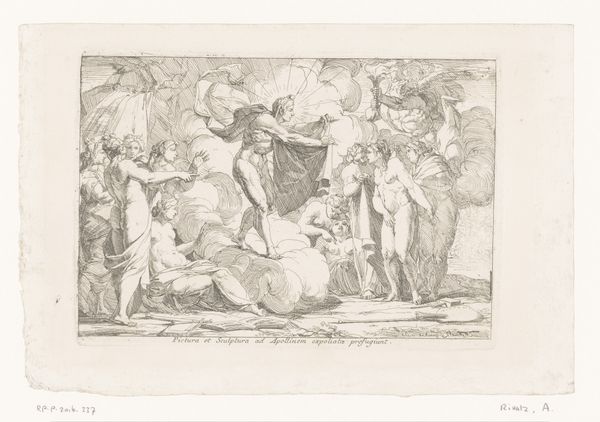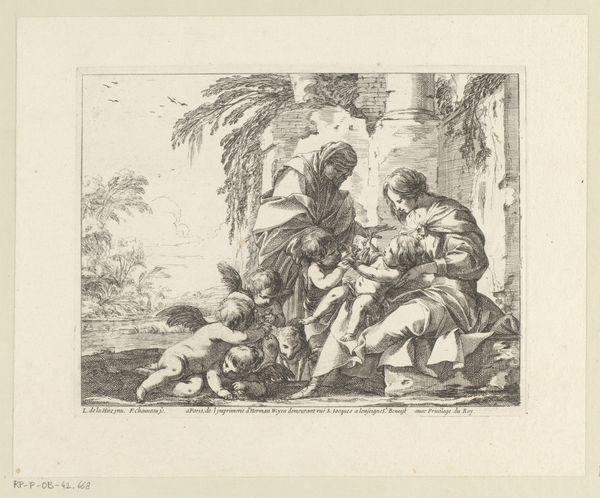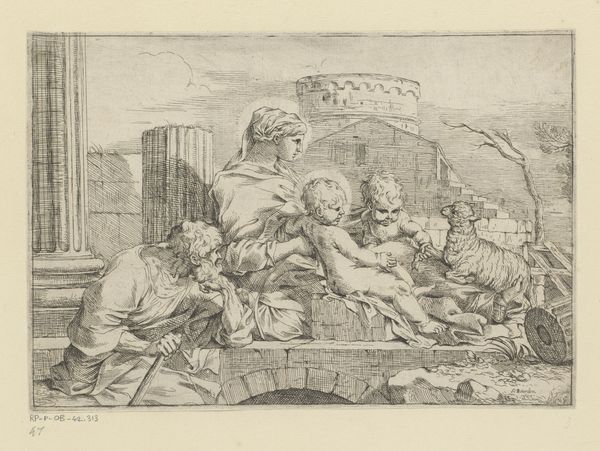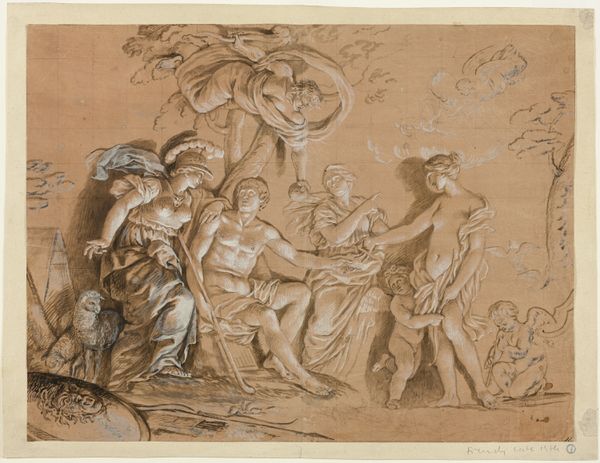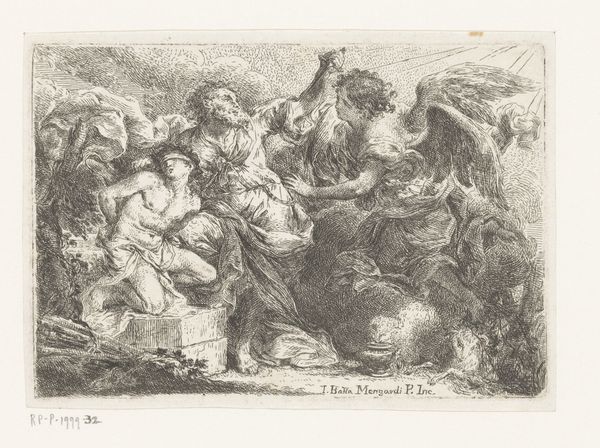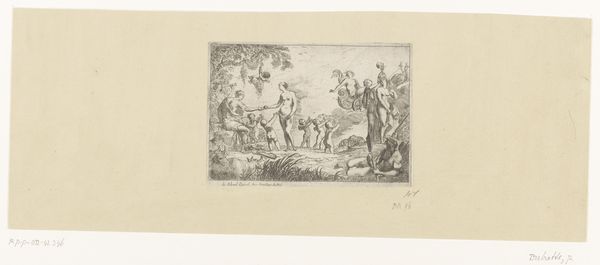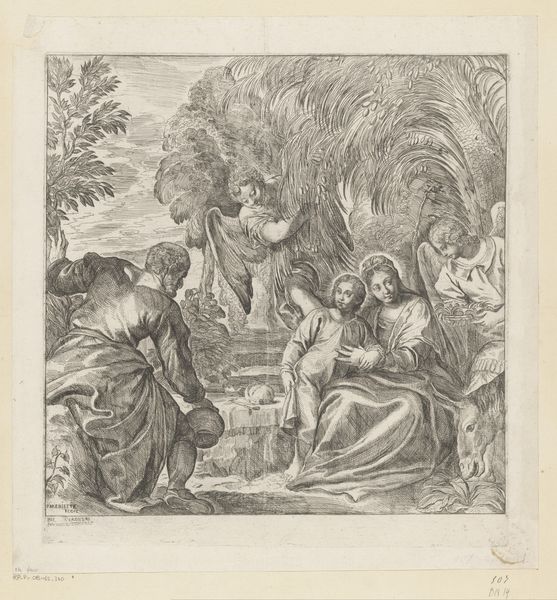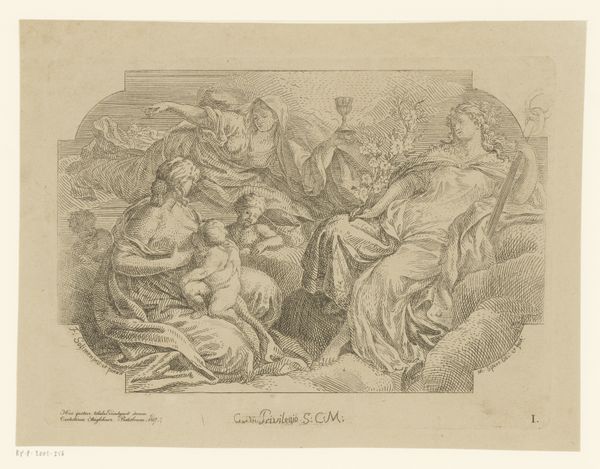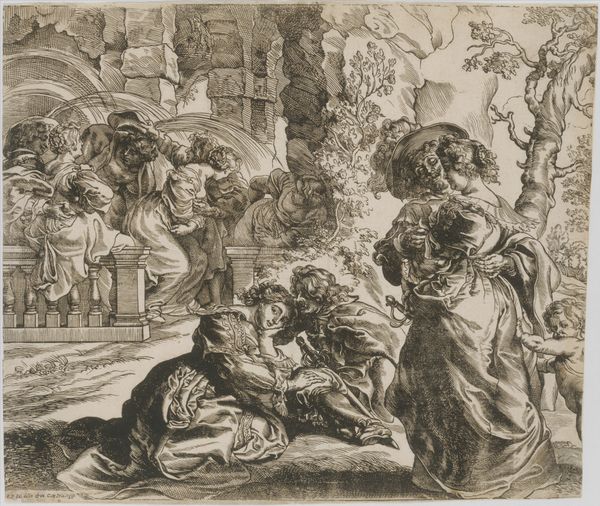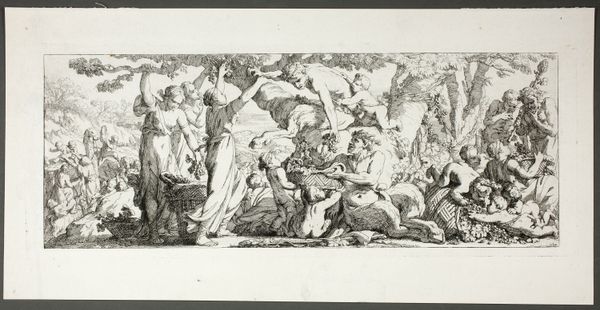
drawing, print, etching
#
drawing
#
baroque
# print
#
pen illustration
#
etching
#
figuration
#
history-painting
Dimensions: height 126 mm, width 168 mm
Copyright: Rijks Museum: Open Domain
Curator: This etching, attributed to Sebastien Bourdon, depicts the Holy Family with John the Baptist and a bird. Created sometime between 1626 and 1671, it invites contemplation on faith and family. What's your initial response to the scene? Editor: It strikes me as a rather intimate portrayal, despite its grand religious subject matter. The delicate lines and the tenderness in the figures' interaction create a mood of quiet reflection, almost melancholic, which I find interesting considering the divine theme. Curator: Absolutely. Bourdon's use of line lends itself well to portraying nuanced emotions. Looking closer, one sees how the relatively confined arrangement of the figures really serves the narrative of a sacred and supportive family. It certainly humanizes these legendary figures, positioning the observer to ponder on their societal positions in addition to their religious notability. Editor: The inclusion of the bird is fascinating, perhaps representing the soul, freedom, or divine messenger, as birds commonly symbolized in religious art. John the Baptist's inclusion suggests a foreshadowing of Christ's destiny, almost setting a political stage. Curator: And the choice to portray the figures in this rather everyday scenario creates accessibility. What is the cultural implication here, and what did that symbolise at this time? Was there something about Baroque interpretations that broke away from conventional approaches? The visual language shifts to focus on relational dynamics rather than grand displays of divine power. Editor: That domesticity certainly alters the narrative. The symbolism, like that bird, becomes less about strict dogma and more about personal faith and humanity’s place within a grand design. By examining art of this period, we can analyze social mores concerning race, identity, gender, and even class. Curator: Precisely! I appreciate how, in its simplicity, the artwork pushes us to critically examine not just the surface-level narrative, but also the embedded socio-political commentaries woven into religious representations of this era. It is about opening an active dialogue! Editor: It enriches our understanding by subtly blending the divine with the mundane, a testament to Bourdon’s insightful approach. It really underscores the symbolic richness embedded even in seemingly straightforward scenes.
Comments
No comments
Be the first to comment and join the conversation on the ultimate creative platform.
